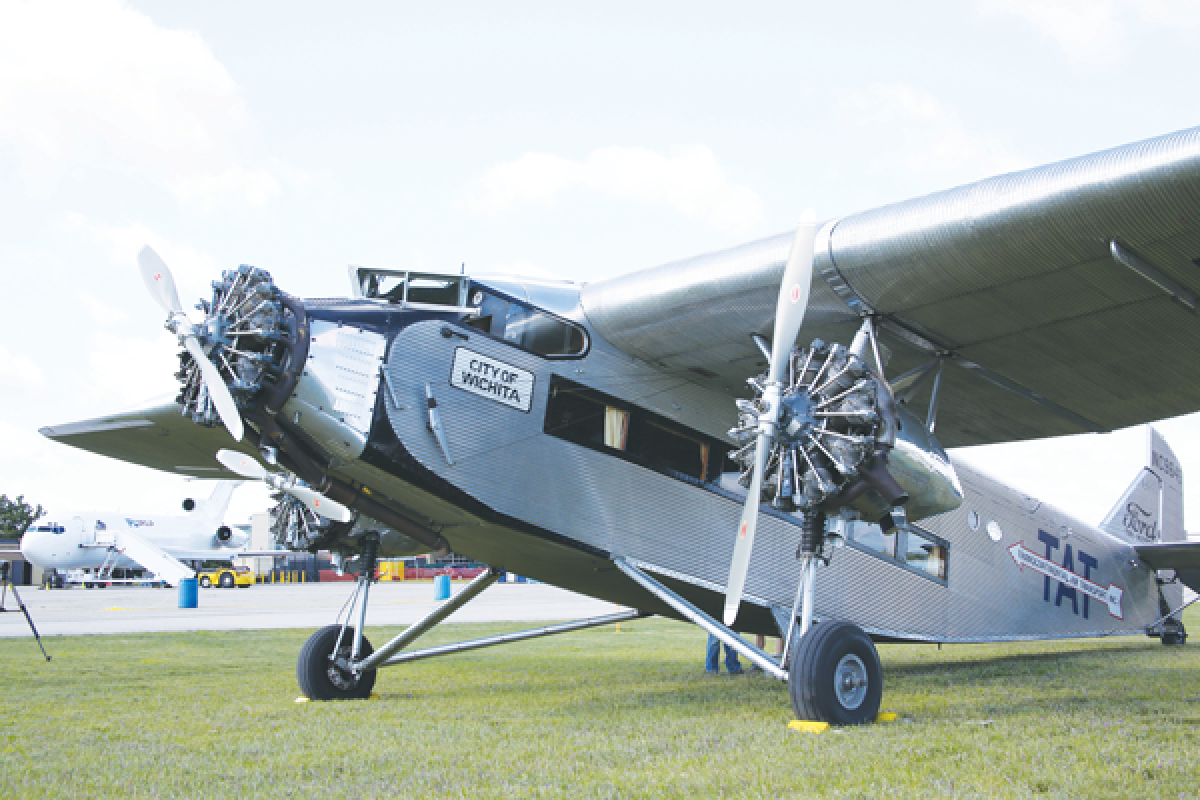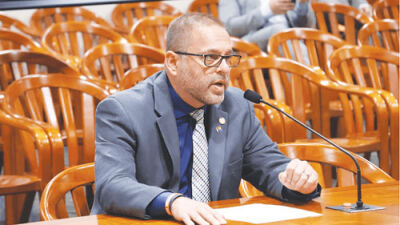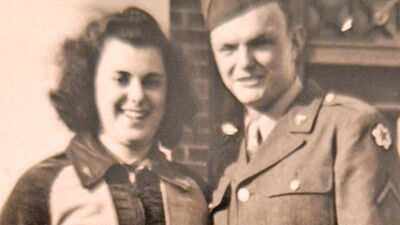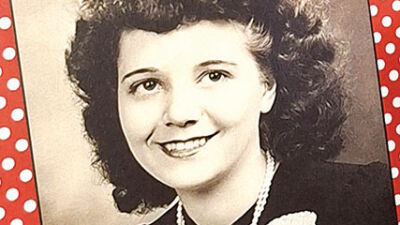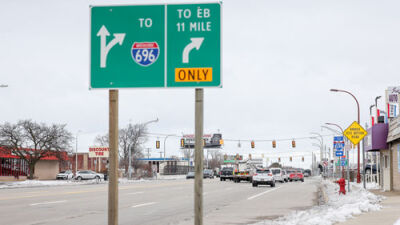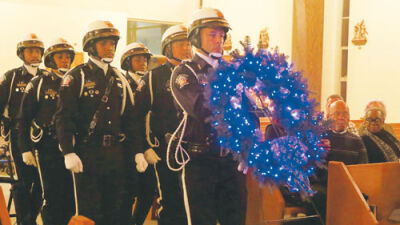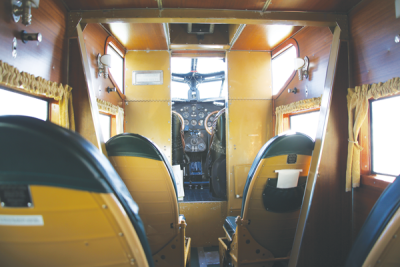
The interior of a 1928 Ford Tri-Motor aircraft reflects the need to impress passengers. In an era when flying had a rough reputation thanks to dogfighters and barnstormers, the Tri-Motor was trimmed out like a contemporary luxury train carriage.
Photo by Dean Vaglia
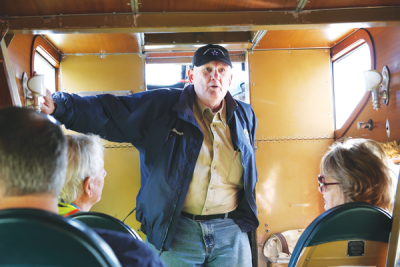
Ashley Messenger, who pilots the Liberty Aviation Museum’s 1928 Ford Tri-Motor, addresses passengers before a flight.
Photo by Dean Vaglia
METRO DETROIT — It is a tin can with three engines, boxy aerodynamics, fixed gears and nearly 100 years of active service. And for a brief window in early August, you could take a flight in it.
For the 2024 edition of its Festival of Flight air show and open house, Oakland County International Airport called upon the Liberty Aviation Museum of Port Clinton, Ohio to fly its 1928 Ford Tri-Motor up to Waterford and take part in the festivities on Sunday, Aug. 11.
With its corrugated aluminum body and three air-cooled engines with not much in the way of fairings around them, the Ford Tri-Motor looks about as spartan as it can be. According to pilot Ashley Messenger, keeping things as tried and true with the Tri-Motor’s construction was Henry Ford’s goal when production began in 1927.
“They wanted an airplane that was made all out of metal, because in the day most of them were made out of wood and covered with fabric,” Messenger said. “They wanted one with three engines for reliability, and they were looking for a machine that would be reliable and long lasting, and this is what they came up with.”
The full aluminum construction of the plane and its few mechanical parts — no flaps and fixed gears mean fewer opportunities for mechanical failures — helped Tri-Motors become aviation workhorses from the start. Some planes would wind up in passenger service and ferry people across the country with interiors rivaling the most lavish railcars, while other more barebones aircraft would become pioneers in air freight. The Liberty Aviation Museum’s plane has done both.
According to Messenger, the plane began service as the City of Wichita for Transcontinental Air Transport, a company that would later become TWA. The Wichita’s early career involved daytime flights as part of a cross-country journey that involved both air and rail travel.
“They would put you on a train in New York and you’d ride all night to Columbus, Ohio,” Messenger said. “At 8 a.m. you’d get a Fred Harvey breakfast, hopped on the airplanes and you hopped to Indianapolis, St. Louis, Kansas City (and) Wichita. That evening you ended up in Waynoka, Oklahoma, got on another sleeper and rode all night to Clovis, New Mexico and then you released the whole thing the next day.”
TAT’s cross-country program took two-and-a-half days to get passengers from New York to Los Angeles, with the City of Wichita being the second-ever plane to depart from Columbus, Ohio as part of the program. As TWA used the Tri-Motor up and upgraded its fleet, the City of Wichita began changing hands. Eventually, it wound up as a cargo plane flying throughout Central America through the 1930s to 1960s, when it was purchased by casino operator Bill Harrah and used for VIP show flights during the Reno Air Races in Nevada. The Evergreen Air Museum in Oregon eventually took ownership of the plane, which is where the Liberty Aviation Museum bought the plane after Evergreen went bankrupt in 2014.
Ford built 199 Tri-Motor planes at its plant in Dearborn. Around 25 of them remain in flying condition, which the Liberty Museum’s plane — given the name City of Wichita/Port Clinton\ to honor its current home while remaining true to its TAT origins — has always been.
For about $100 dollars, festivalgoers could go on a brief flight on the Tri-Motor around north-central Oakland County and get a taste of what it was like to be a passenger in the early days of commercial aviation. Select members of Oakland County government and the media were given the opportunity to take a flight on the Saturday before the show.
The Tri-Motor has the luxury of a 1920s train carriage and the sensation of being strapped into a minecart at full clip. Every turn of the wheel — yes, wheel, not yoke — and turbulence-forced correction is felt in your core. Flying straight shakes you in the seat while banking tests your constitution and gut strength, with challenges regularly posed by westerly winds reaching up to 24 mph pushing against the brick-shaped fuselage. Landing, though, is smooth, and the volume of the plane’s three Pratt & Whitney R-985 engines are quieter than their looks betray, each making 450 horsepower and pushing the aluminum brick to 86 mph. The accommodations of the Wichita/Port Clinton are nice, but a few minutes in the air is enough to see why, as Messenger explained, its original travelers were ready to get off the second it touched solid ground.
As for a review? Overall, a wonderful flight. Four-and-a-half stars. Much better than Spirit or Southwest. Would fly again.
The Festival of Flight air show and open house is free and tends to take place every year in mid-August at Oakland County International Airport. Air shows and other such events have occurred at the airport since it was built, with aviation pioneer Orville Wright attending one of the early shows.
“It’s a real family-centered event,” said Cheryl Bush, the manager of all three Oakland County-owned airports. “There is a great variety of aviation, and our hope is that we can get young folks that may not have an exposure to aviation a little bit excited about the possibility of aviation in their future.”
Officially chartered as airport 000001 by the United States Department of Commerce in 1930, Oakland County has owned the general aviation airport since 1967 when it was traded by the city of Pontiac for the city’s old Masonic Temple. It is the second busiest airport in Michigan by annual takeoffs, landings and traffic for an estimated $1.1 billion economic impact as of 2019. Freight companies and private aircraft owners are the primary users of the airport.
 Publication select ▼
Publication select ▼